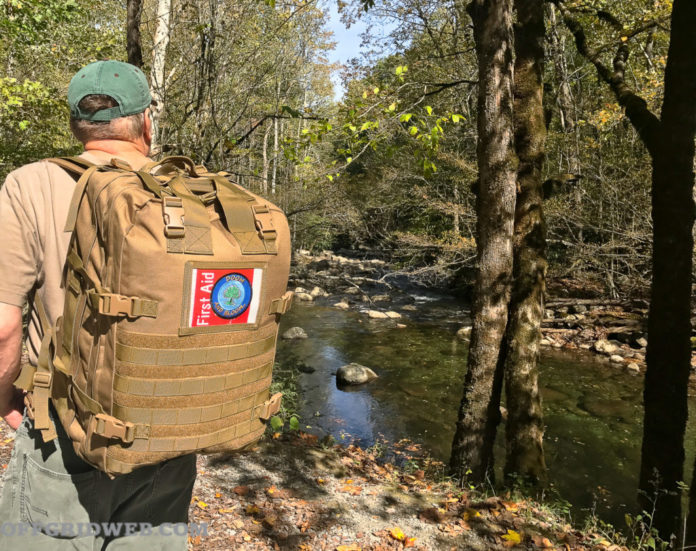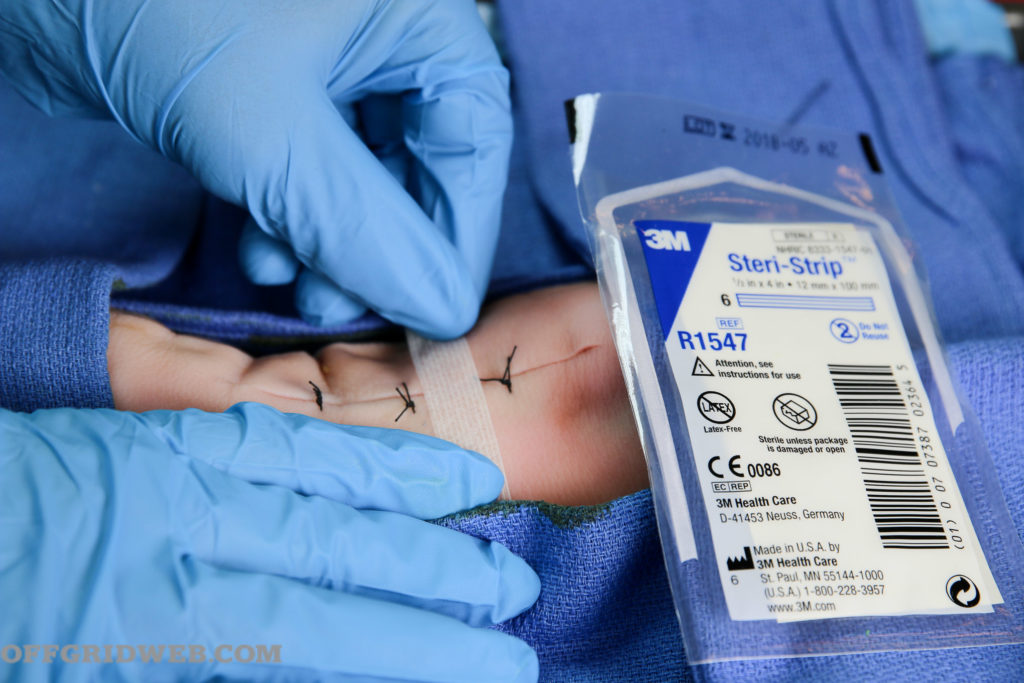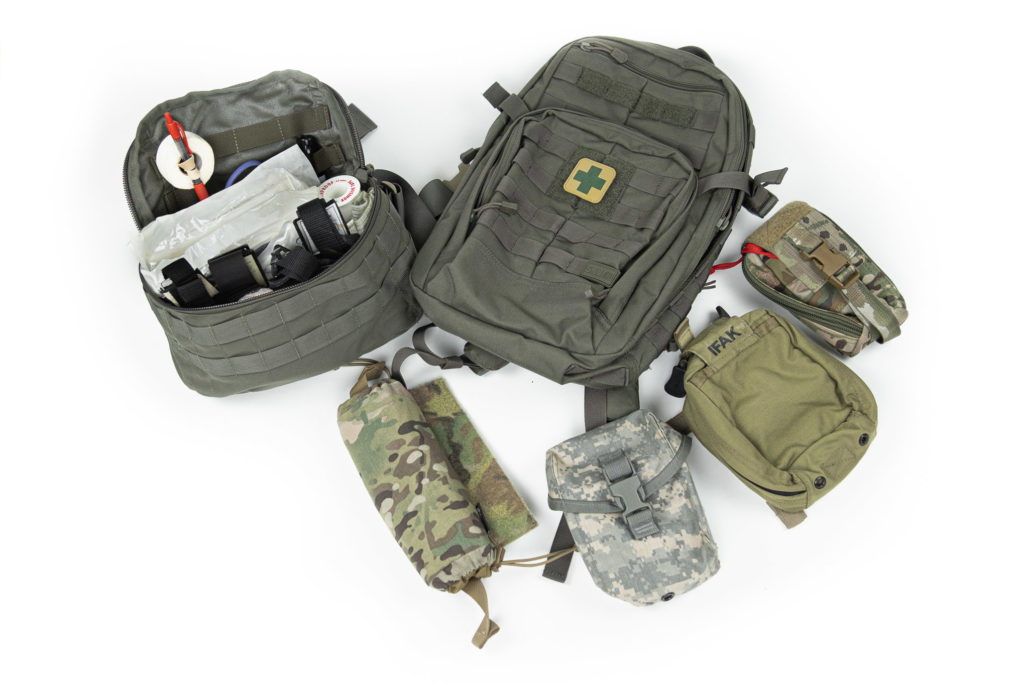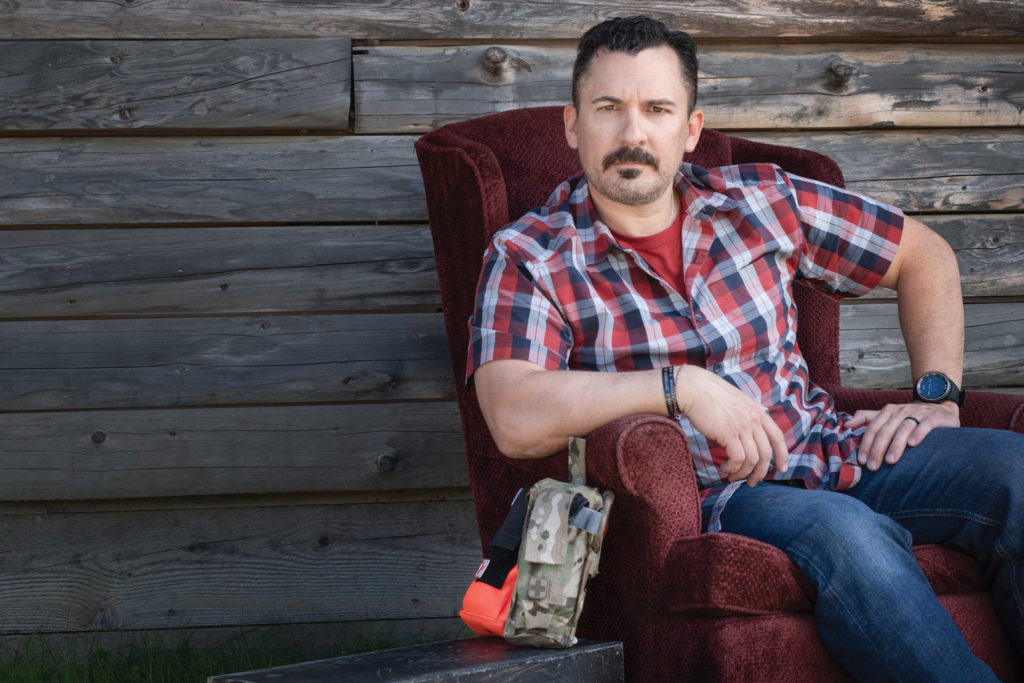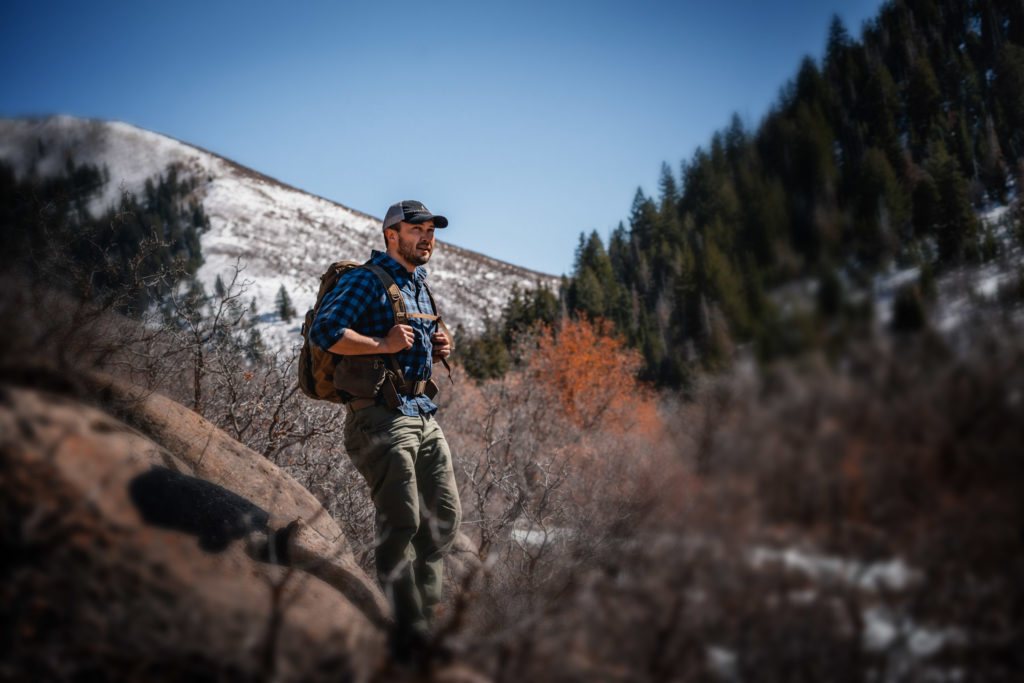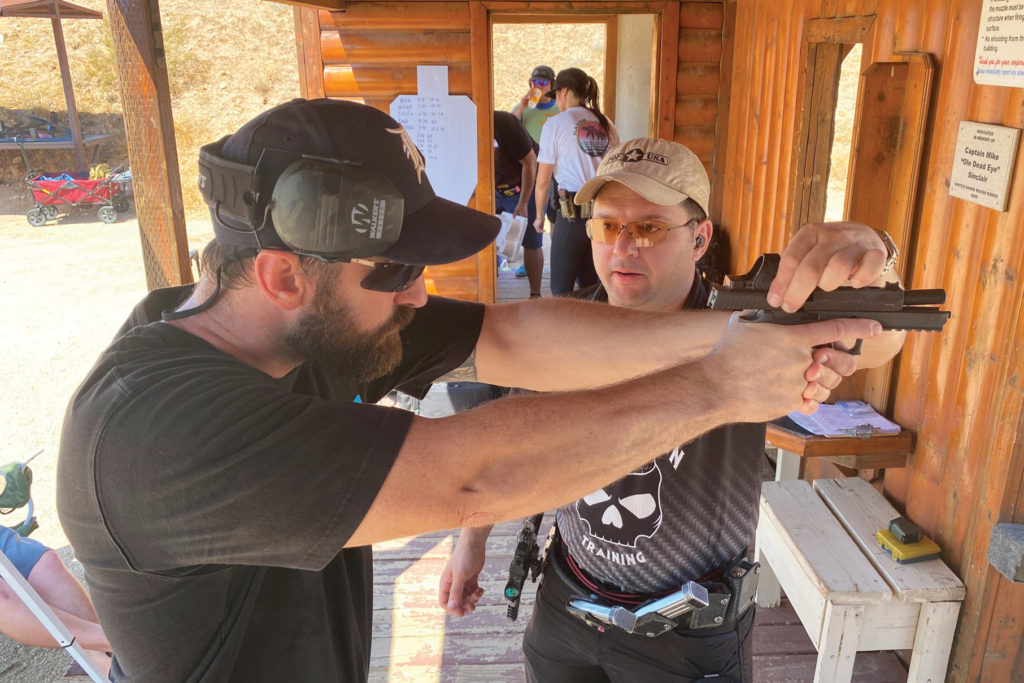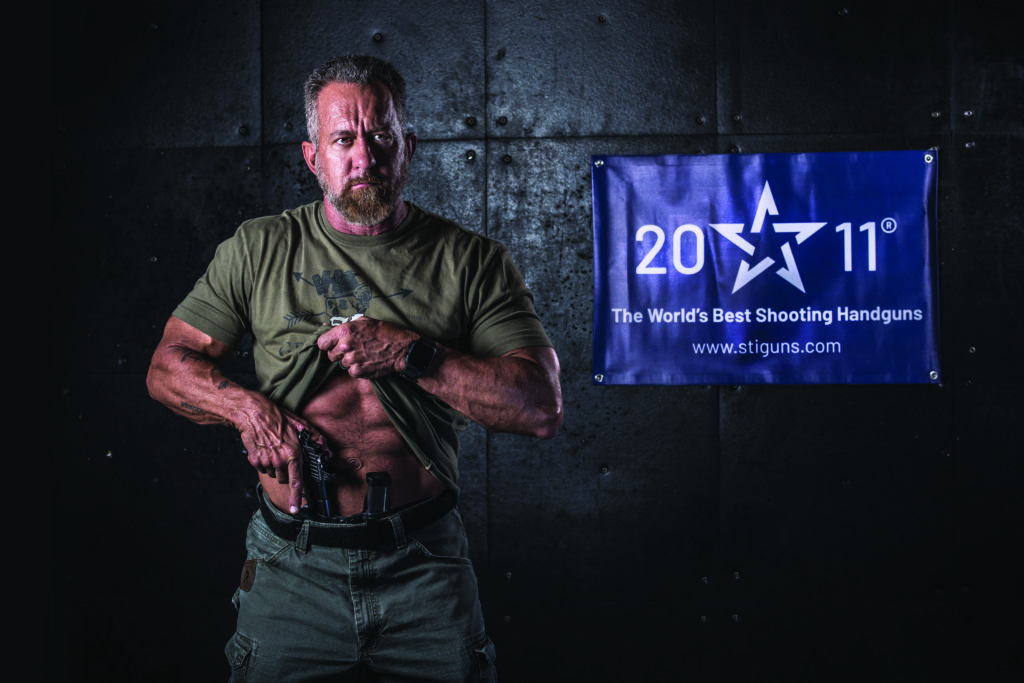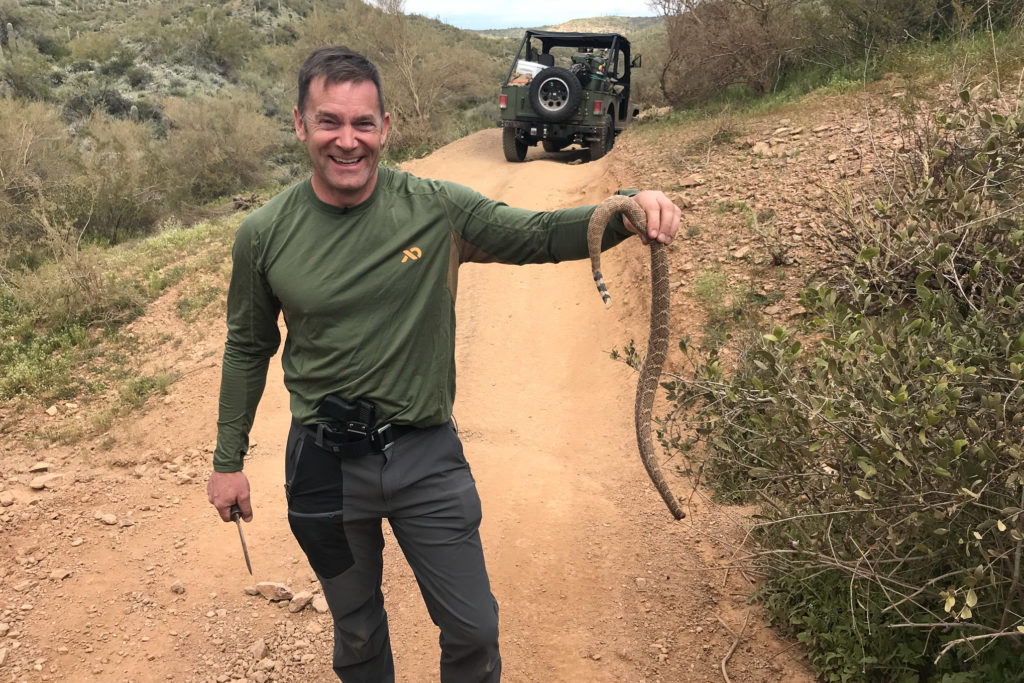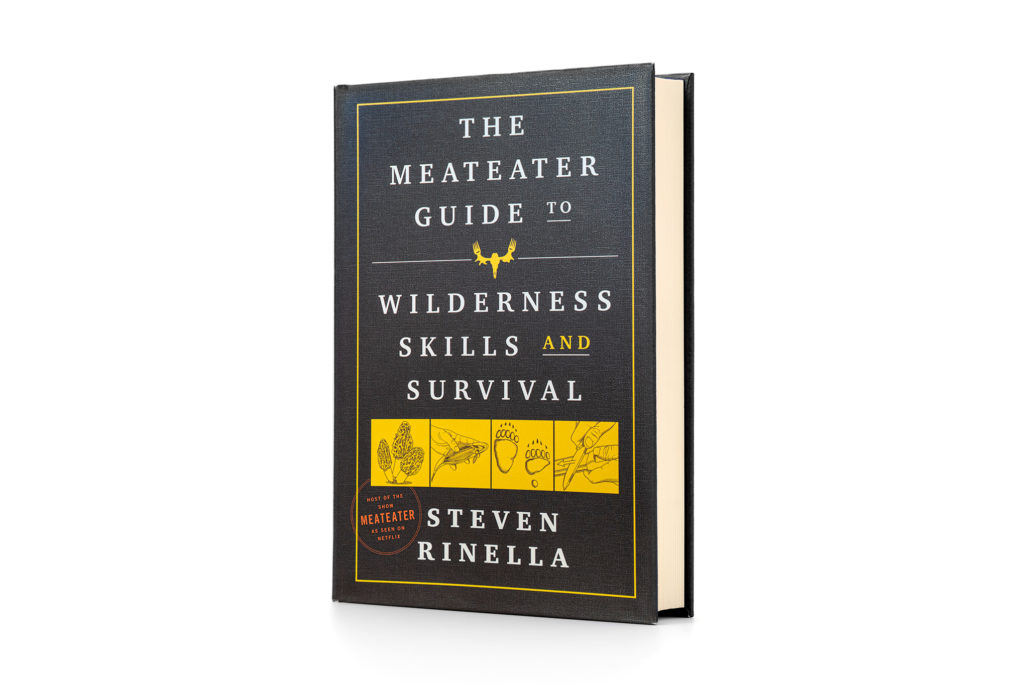One of the most important skills for the family medic to master is the ability to rapidly stop bleeding (also known as “achieving hemostasis”). In survival scenarios, bleeding can occur from various sources, from a fall on uneven terrain to a hostile encounter with another group. Failure to properly treat bleeding wounds can lead to unnecessary deaths among survivors. A 2013 study reported in Military Times found that close to 25 percent of the combat deaths in Iraq and Afghanistan between 2001 and 2011 might have been survivable with rapid and appropriate actions. One result is the second look at hemostatic agent options available.
Certainly, the survival medic can save some lives with the right knowledge, training, and equipment. For example, a caregiver with a tourniquet will be more successful than one without. In addition to tourniquets, there are commercially available hemorrhage control (also known as “hemostatic”) agents that are effective in stopping even heavy bleeding.
The ideal hemostatic agent is one that works quickly, is easily portable, has few complications, and doesn’t interfere with tissue healing. Oh, one more thing: It must be available at a reasonable price. Unfortunately, the most effective dressings like QuikClot, Celox, and ChitoSam aren’t cheap; it may be difficult, financially, for the average citizen to stockpile enough to deal with multiple bleeding wounds.
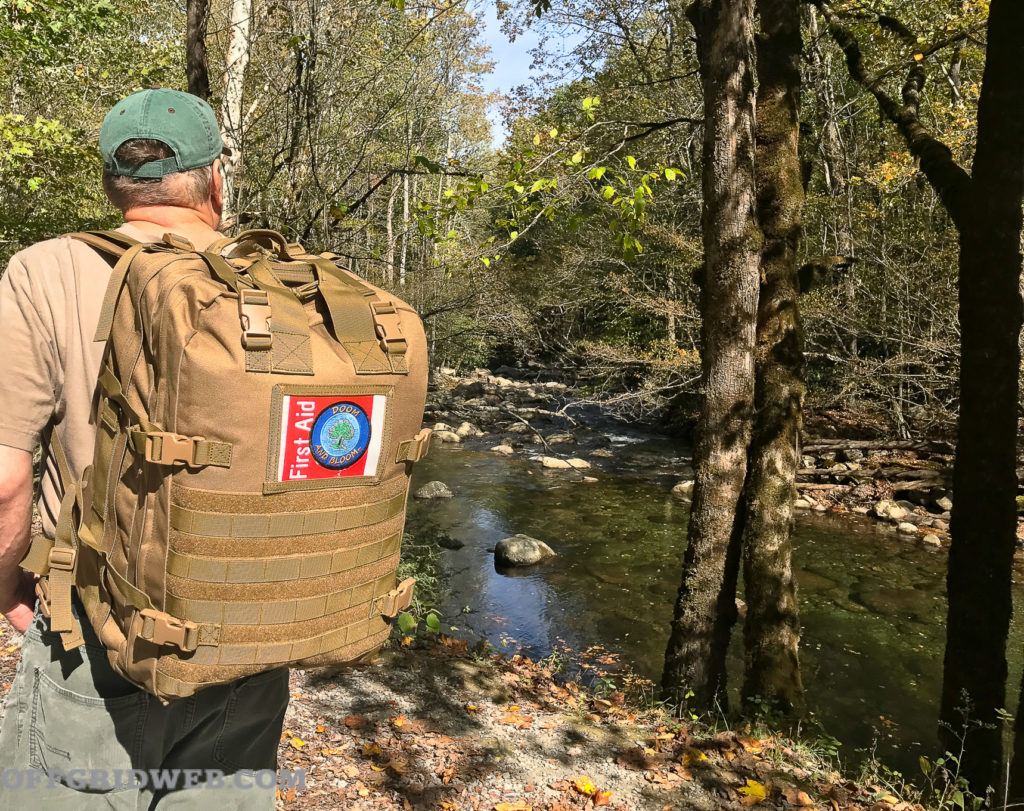
It’s clear that a caregiver in austere settings must improvise once the commercial hemostatic agent options are gone. What options are out there that could help stop the bleed besides just applying direct pressure and hoping for the best? Direct pressure with both hands and your full weight on the wound may be successful, but what if it isn’t? Elevation of a bleeding extremity might help, but what if it doesn’t?
The answer might be growing in your own backyard. Certain plants are known for their blood-clotting abilities; it’s important to either grow them in a medicinal garden or know where they exist in the great outdoors. Some of the items below may not yet have hard scientific proof of effectiveness. Despite this, they might be all you have when the commercial materials run out.
How Blood Clots
Hemostasis is the control of bleeding. As soon as a blood vessel wall is damaged, the body reacts to close the breach:
Primary Hemostasis: Tiny particles in the blood known as platelets start clumping together at the breach in the vessel, attracting even more platelets and forming a “plug.”
Secondary Hemostasis: Clotting factors in the blood form strands of a material called fibrin, which deposits around the injury and forms a mesh with the platelet plug that seals the wound.
The whole thing dries and hardens, forming a clot. Over time, the clot dissolves.
Yarrow
Yarrow (Achillea millefolium), was known in ancient times as “herba militaris” for its use in staunching the flow of blood from wounds. Indeed, the Greek hero Achilles is said to have carried it during the Trojan War. It’s native to temperate regions almost everywhere in the Northern Hemisphere, from sea level to altitudes of 11,500 feet.
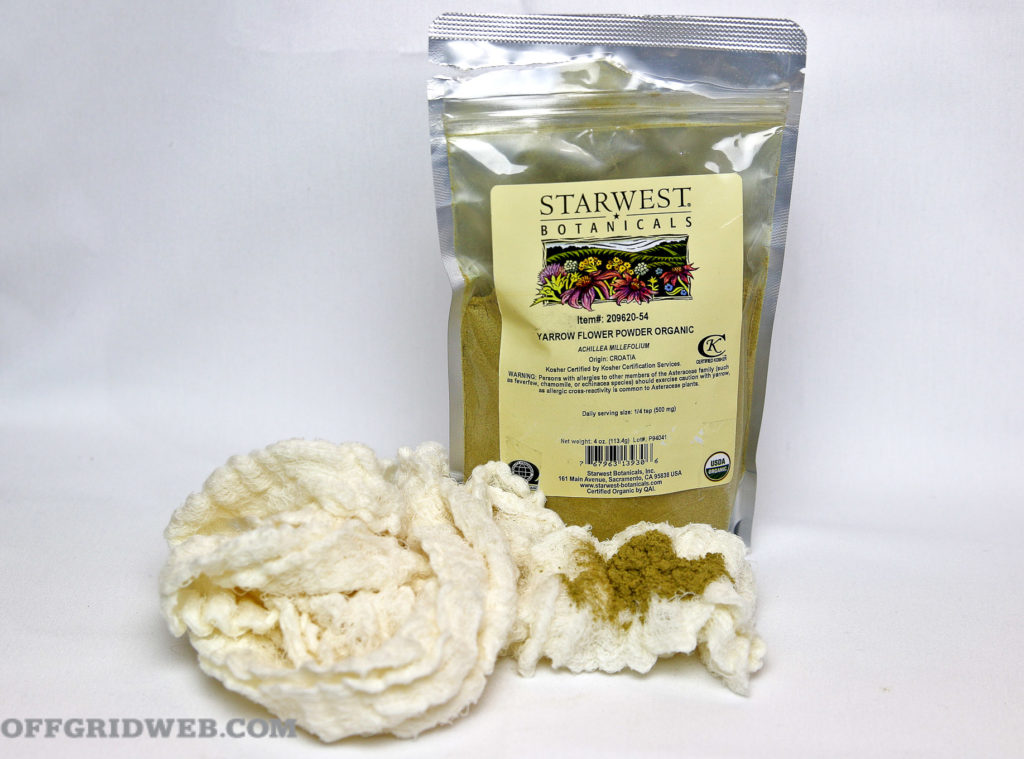
To stop bleeding, yarrow is normally used as a powder made from grinding dried leaves and flowers, but applying fresh plant material in a poultice is also acceptable. Cover the natural hemostatic agent with gauze and apply pressure. Elevate if the wound is in an extremity.
Cayenne Pepper
Cayenne pepper (Capsicum annuum) isn’t just meant to spice up your meal — the capsaicin in it is thought to have a coagulating effect on mild bleeding as well as some antibacterial properties. To be effective, you have to use a lot of the most potent cayenne you can find in powder form. Pour it directly on the wound, cover with gauze or other cloth, and apply pressure for several minutes. Multiple applications may be needed.
Won’t cayenne pepper powder burn when applied? Having applied it on myself and seen it applied to bleeding injuries in dogs without a pain response, the answer is not much.
Tea
For dental bleeding after an extraction, black or green tea (Camellia sinensis) may be used. Teas contain tannins, which are thought to help blood to clot by making vessels constrict. They may also have antiseptic properties. Teas with caffeine are thought to be more effective.
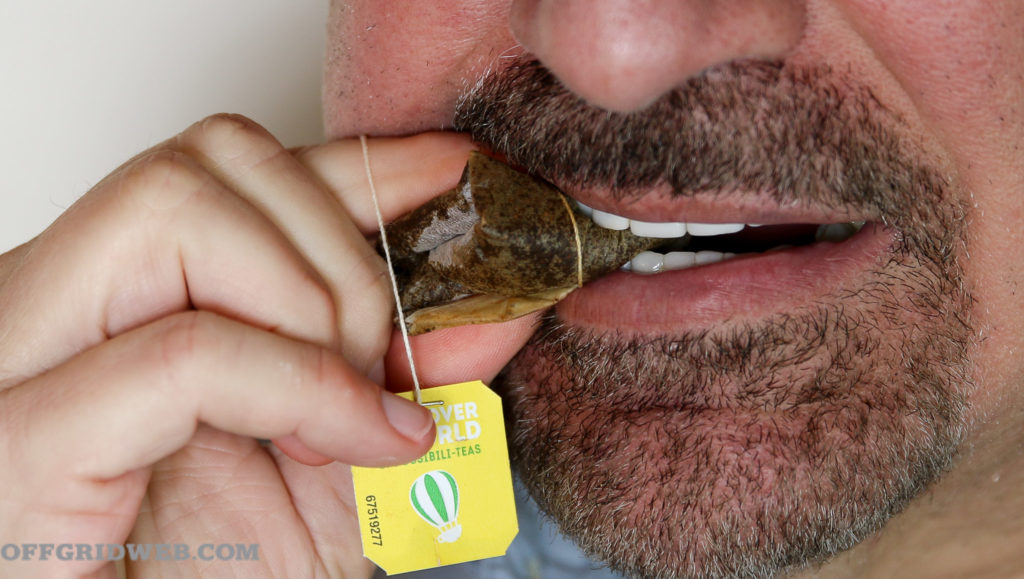
Take a tea bag that’s been steeped and allowed to cool, wrap in thin gauze, and place on the bleeding area with pressure. For bleeding after a tooth extraction, have the patient bite down on the tea bag gently but firmly in the now-empty socket. If bleeding is from the inside of the cheek or other area in the oral cavity, place against the bleeding area and apply pressure on the area from outside with the mouth closed.
Some believe that tea compresses may help with mild external cuts on the skin. Press a dry green or black tea bag against the wound, cover with gauze or other cloth, and apply pressure.
Witch Hazel
Witch hazel is a temperate North American shrub. “Witch” doesn’t refer to practitioners of magic, but the Middle English word for “bendable.” Distilled witch hazel has an astringent effect that tightens skin, constricts small blood vessels, and promotes clotting. Apply a small amount of the hemostatic agent to a compress and press on the wound. Pure witch hazel can be found at most drugstores.
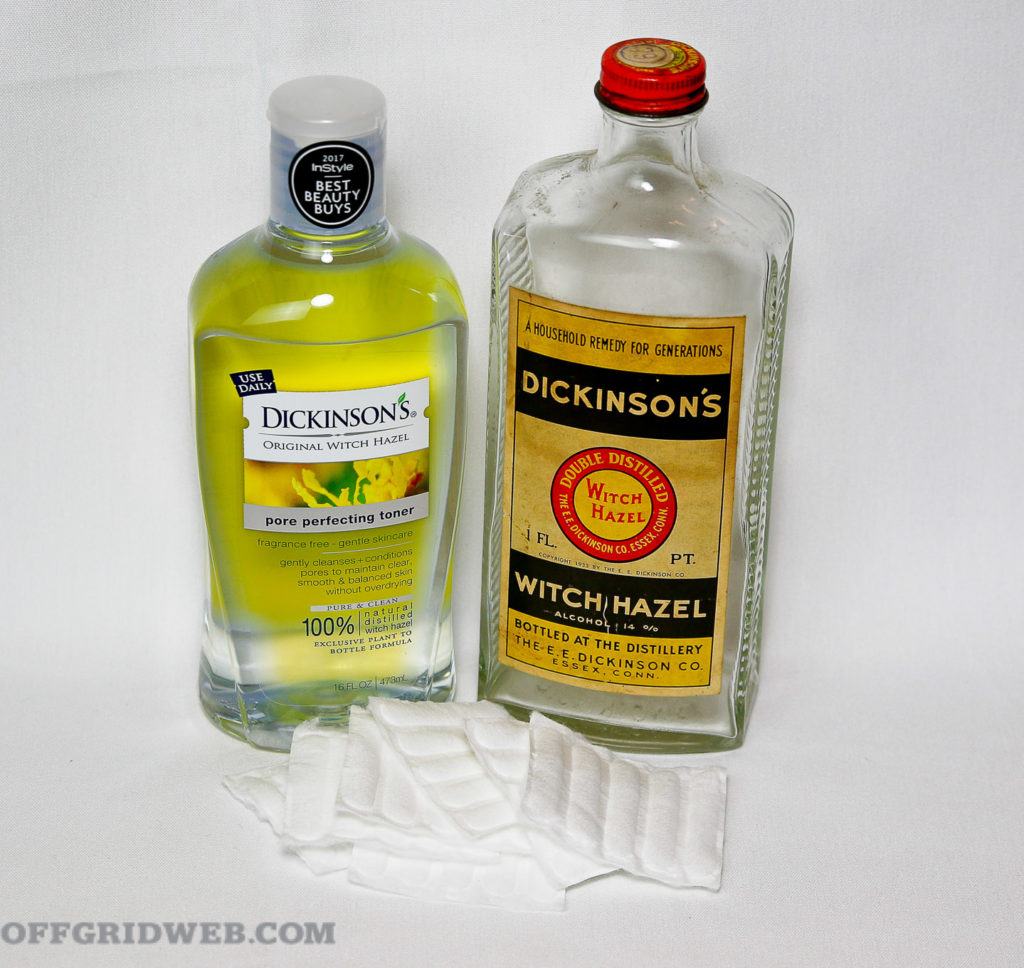
Other common plants that have an astringent effect include plantain, rose, and horsetail. Be aware that people may sometimes be allergic to certain plants, so monitor closely for rashes, itching, or other signs of a reaction.
Non-Plant Hemostatic Agent Options
While a number of plants are reputed to stop bleeding, you might be surprised to know that the two main products used in expensive commercial blood-clotters are actually: 1) a type of clay, and 2) the shells of shrimp and other crustaceans.
Kaolin Clay
Kaolin clay is the main ingredient in the popular commercial hemostatic agent QuikClot. It was once the main ingredient in the anti-diarrheal drug Kaopectate (it’s now Bismuth Subsalicylate, the same ingredient used in Pepto-Bismol). Kaolin is scientifically proven to stop bleeding. Contact between kaolin and blood immediately initiates the clotting process by activating Factor XII, a major player in the cascade of events that stops hemorrhage.
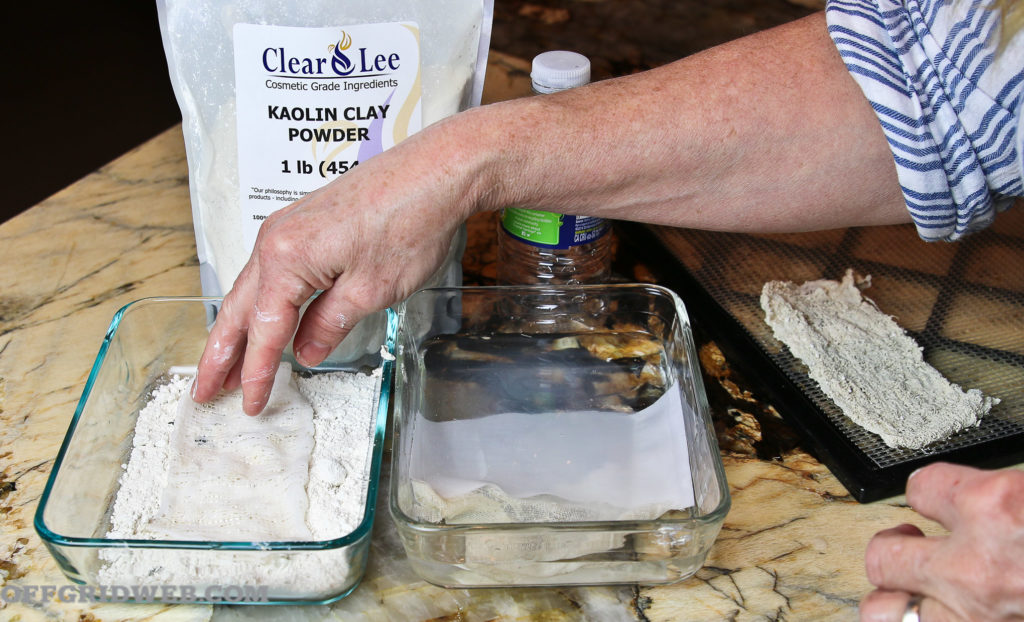
Kaolin is commercially available for purchase in powder form. Apply the clay powder directly to a bleeding wound or onto a dressing and then on the injury. Kaolin dressings can be improvised by dipping cotton gauze or cloth in water and allowing to dry. Like the commercial version, firm direct pressure on the area for several minutes is required for full effect.
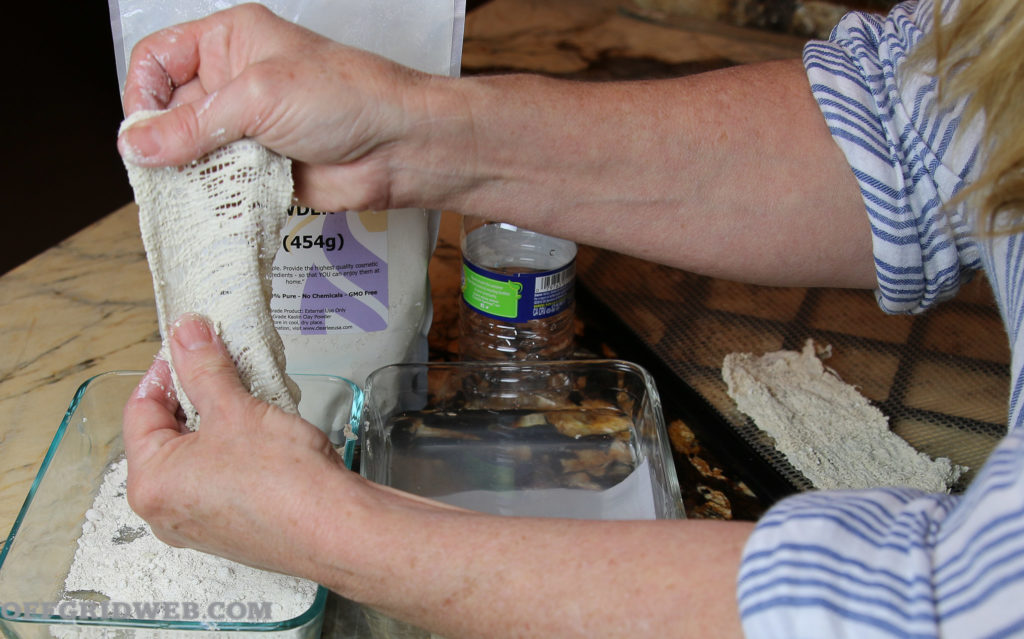
It should be noted that kaolin doesn’t cause burns when used. This is the reason that QuikClot switched to it years ago after bad experiences with the former main ingredient known as zeolite.
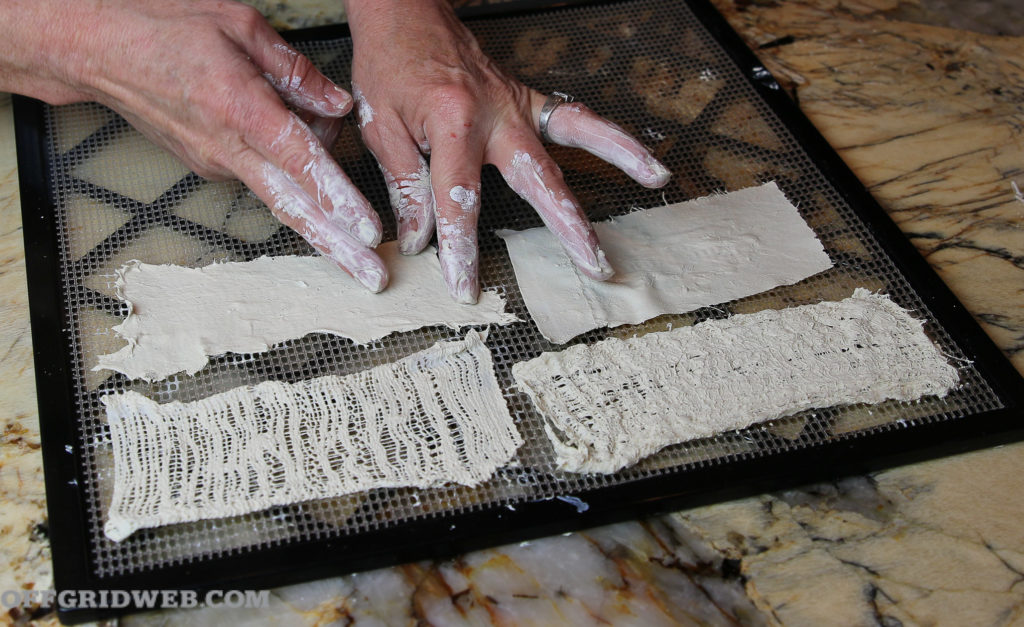
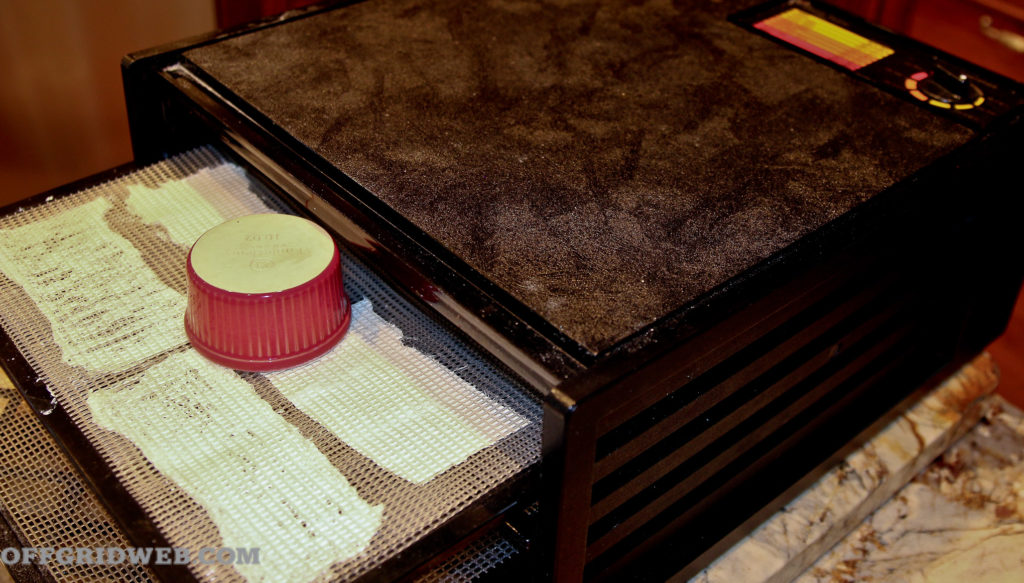
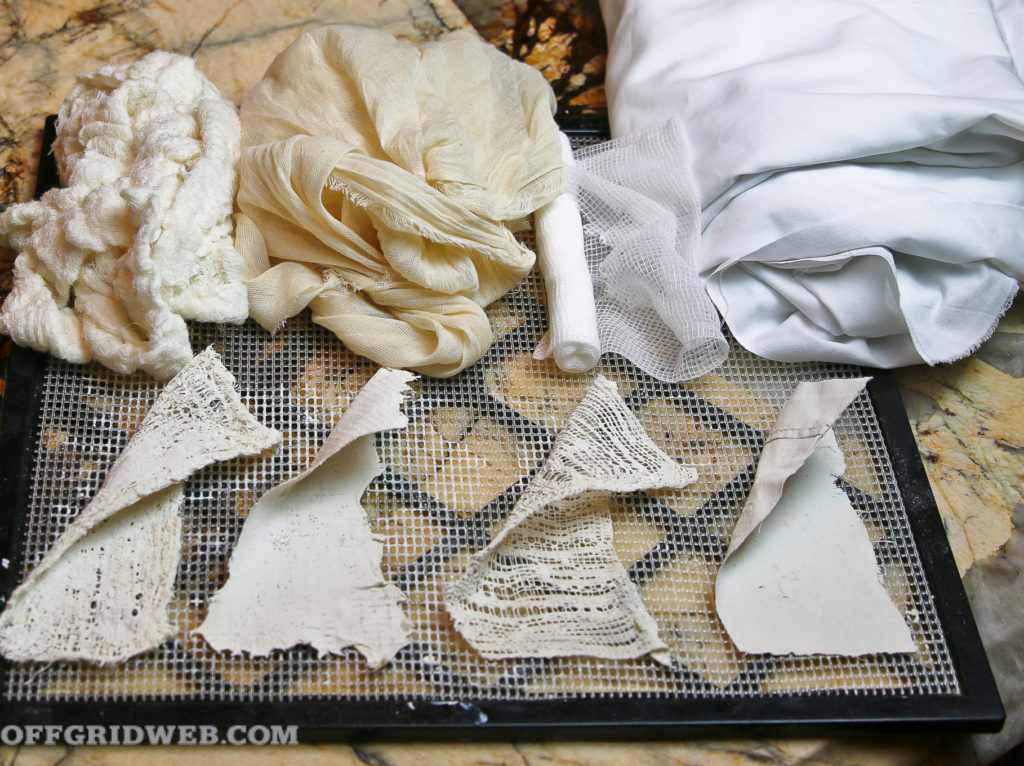
Chitosan
Chitosan is a naturally occurring part of the exoskeletons of crustaceans like shrimp. Processed in a way that prevents reactions in those allergic to shellfish, it’s highly effective as a blood-clotting agent and can be found in products like ChitoSam, Celox, and others. When chitosan products come into contact with blood, they bond with it and form a gel plug that acts as a clot. Unlike kaolin, chitosan doesn’t use up the body’s clotting factors, something beneficial to those who may have a deficiency of these important substances.
Chitosan can be purchased as a powder. Use vinegar to moisten gauze pads and dip both sides into a bowl of the powder just like you would bread a piece of chicken. Use a dehydrator or oven on low heat to make your own hemostatic agent infused dressings. Alternatively, freeze and then use dry ice in a covered container with holes to achieve a similar effect.
Kaolin clay, animal, or botanical products may be the answer to bleeding control in some cases, but certain other common items have the potential to staunch blood loss.
Ice
Like some astringent plants, applying ice to a wound will constrict small blood vessels. In minor bleeds, ice might allow a clot to form more quickly while reducing swelling. Wrap some ice in a clean, dry cloth and place on the wound with gentle pressure to avoid traumatizing skin.
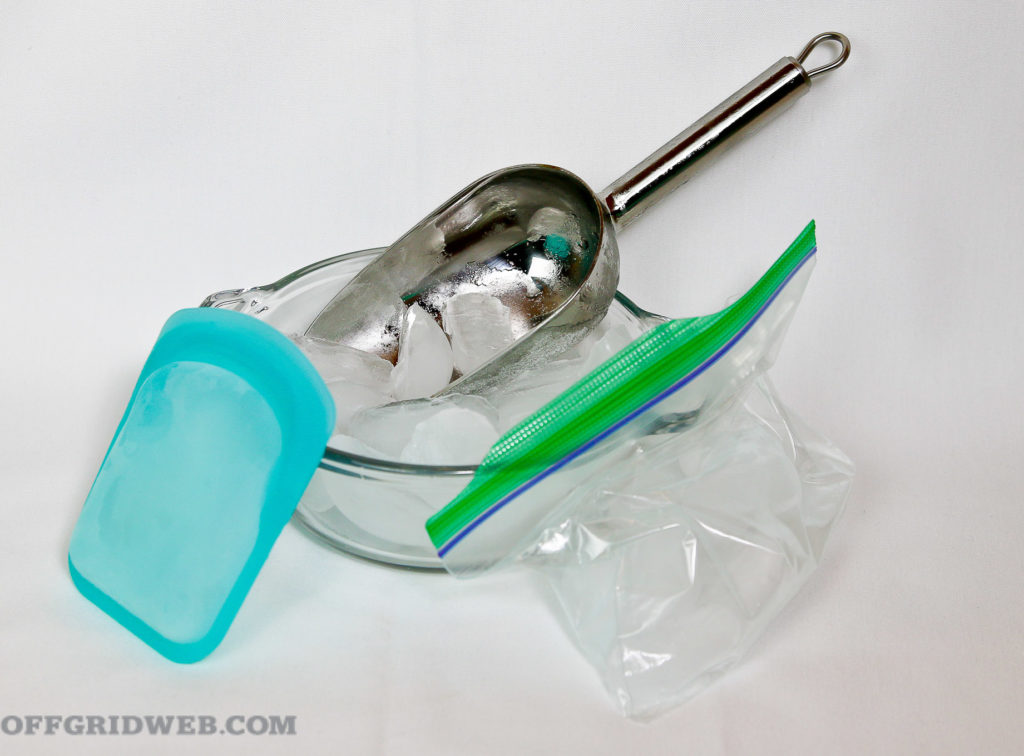
Antiperspirants
Some antiperspirants contain aluminum chloride, another astringent that might constrict small blood vessels. Aluminum chloride as low as 5 percent concentration exerted a hemostatic effect through a chemical reaction and was deemed effective in a 2015 study. Aluminum sulfate, the ingredient in styptic pencils to treat bleeding from cuts incurred while shaving, is a related product.
Petroleum Jelly
For shallow cuts, petroleum jelly may be an option to slow bleeding. You may have been a spectator at a boxing match where the manager treats his fighter’s injuries with it. Apply a layer on a minor bleed with direct pressure. Once the bleeding has stopped, blot the jelly off and clean the wound.
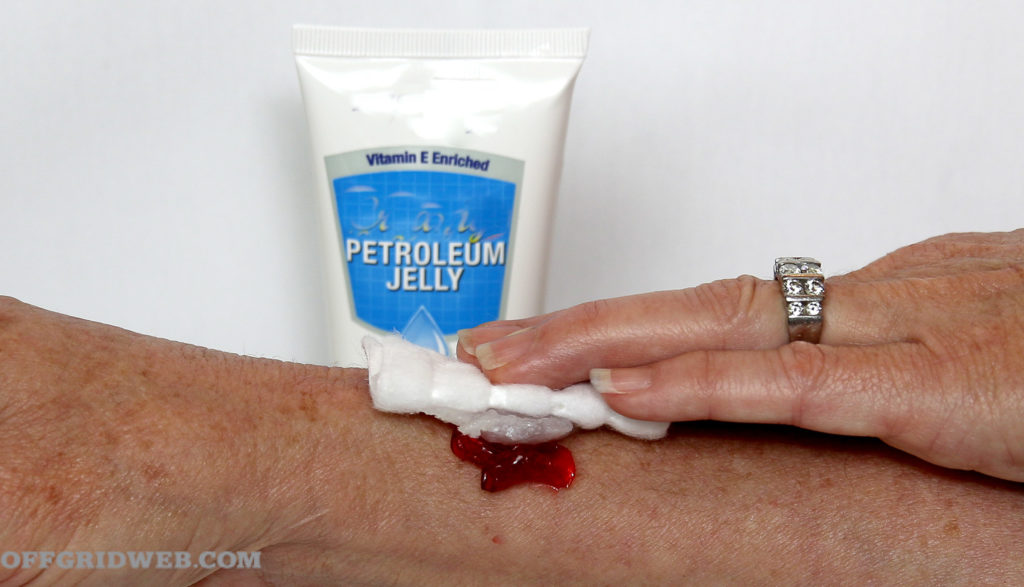
Tactical Tampons?
Another bleeding-control improvisation you’ll often hear about is the “tactical tampon.” There’s a persistent notion that this feminine sanitary product is an excellent addition to your medical kit. There are many, usually second-hand, accounts that these items saved the life of a soldier because a savvy medic made sure to have some on hand.
Why wouldn’t a tampon work as a hemostatic agent? After all, it might be the right size to plug a bullet hole. When a projectile strikes soft tissue at high speed, however, it creates a channel through which the projectile travels. As a matter of fact, it causes two channels — a permanent one caused by the actual path and a larger, temporary one caused by the energy wave released into the body by the round’s impact. Vessels and organs affected by this secondary shock wave might not be in the direct line of the permanent cavity (and the subsequent tampon placement), but can be damaged and easily bleed.
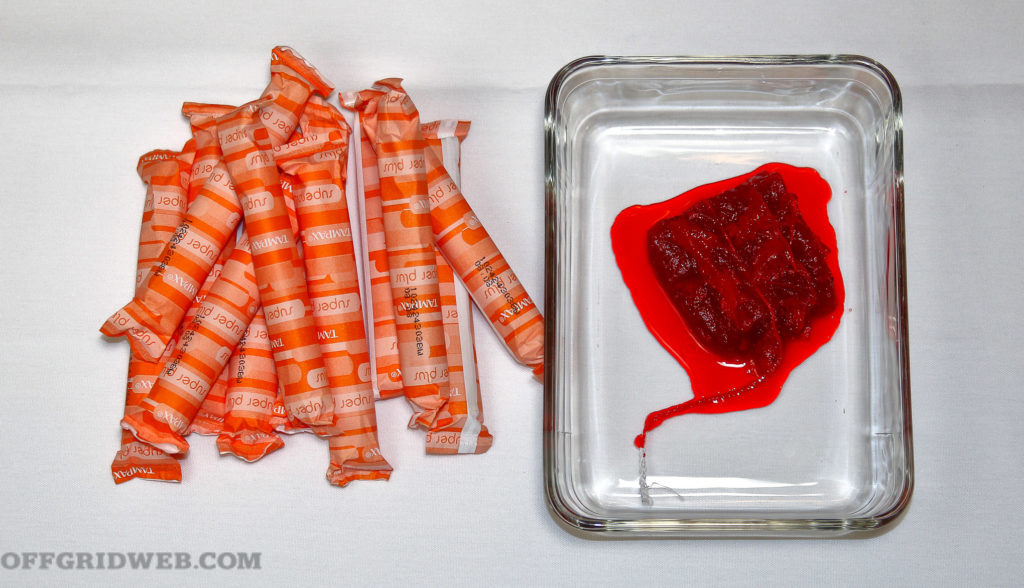
Bullets traveling at high speeds go deeper into the body than a tampon can reach. Plugging a hole, even one that looks like it could fit a tampon, doesn’t stop the hemorrhage inside. It just pools internally or finds an exit wound. The tampon would just conceal the bleeding, not stop it. Even the most absorbent tampon can only handle about 15 grams or so of blood. The rest has to go somewhere. Just because you don’t see a hemorrhage doesn’t mean it isn’t happening. “Successes” in the field were, probably, nightmares for the surgical team after evacuation.
Mistakes When Stopping the Bleed
Rapid action by those at the scene can save lives, but some common mistakes can lead to tragic outcomes:
- Panic! The shock of seeing a major hemorrhage can cause hesitation to act.
- Being timid when applying pressure to the wound (yes, it’s going to hurt).
- Failing to pack dressings directly onto the bleeding vessel.
- Failing to apply pressure to a commercial hemostatic dressing for three full minutes or longer for improvised dressings.
- Hesitating to apply a tourniquet as a first course of action in cases of heavy bleeding.
- Failing to apply a compression bandage over the hemostatic dressing.
- Assuming a controlled hemorrhage doesn’t require close monitoring for re-bleeds.
Closing Thoughts // Hemostatic Agent
Are the above strategies as good as having high-tech commercially made hemostatic agent or dressings? Unfortunately, no. None of these improvisations would have the standardized production process and assure sterility as well as a commercially manufactured dressing like QuikClot, Celox, or ChitoSam. Since it’s likely that the infection rates off-the-grid would be higher than in normal times, it’s worth having some in your medical storage. But if the commercial items run out and the options we mention here are all you have, they could still make the difference between life and death. As Teddy Roosevelt once said, “Do what you can, with what you have, where you are.”
About the Author
Joe Alton, MD, FACOG, FACS, is an actively licensed physician and surgeon, medical preparedness advocate, and New York Times/Amazon bestselling author on medical topics related to austere settings. He’s a member of the Wilderness Medical Society and a certified Advanced Wilderness Expedition Provider. The third edition of his Survival Medicine Handbook won first place in the 2017 Book Excellence Awards in medicine, and his book Alton’s Antibiotics and Infectious Disease won the same award in 2020. His survival medicine website at doomandbloom.net has over 1,200 articles, podcasts, and videos, and has won the Reader’s Choice award on Survivaltop50.com for several consecutive years. The fourth edition of Survival Medicine Handbook is currently available online.
More on Survival and Emergency Medical Skills
- Emergency Medical Care without a Hospital
- IFAK versus Portable Medical Kit: Scaling your Gear
- Wound Cube: Medical Training Tool Review
- Medical Trauma Treatment: Stories of Combat Survival
Related Posts
The post Stop The Bleeding: A Guide to Hemostatic Agent Choices appeared first on RECOIL OFFGRID.


